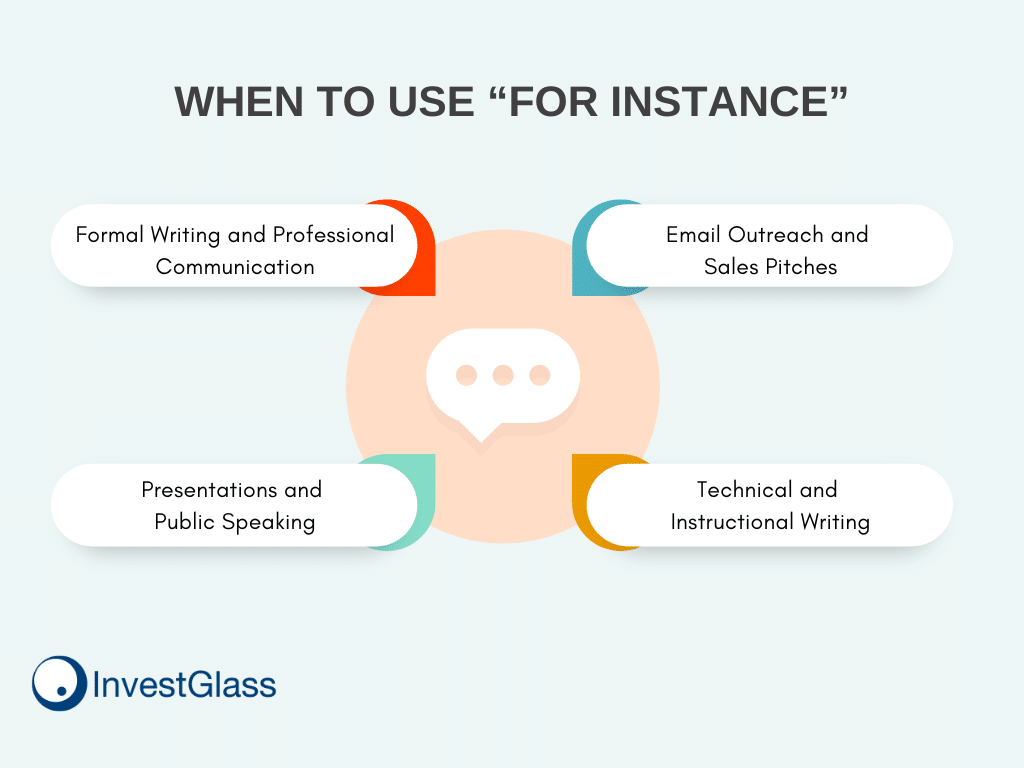10 Fresh Ways to Say “For Example”

Repetitive word usage can make writing monotonous and unoriginal, reducing reader engagement. Studies show that using a diverse vocabulary can improve comprehension and retention by up to 30% (VeryBigBrain). Incorporating varied expressions not only enlivens your prose but also enhances clarity. For instance, instead of repeatedly using “for example,” consider alternatives like “for instance,” “such as,” “to illustrate,” or “namely” (YourDictionary).
This diversification maintains reader interest and prevents redundancy. Additionally, research suggests that overusing certain words can negatively affect the perceived quality of writing, making it essential to employ synonyms and varied sentence structures (Thesaurus.com). By consciously varying your language, you ensure that your writing remains engaging, dynamic, and effective in conveying your message.
Powers of synonyms in communication
Using synonyms is a great way to showcase your vocabulary and express yourself uniquely. However, The University of North Carolina’s Writing Center emphasizes this can be more time-consuming and challenging for you to find the right words for the context.
In what contexts is “for instance” best used?

When to Use “For Instance”
Formal Writing and Professional Communication
“For instance” shines in formal writing, making it an ideal choice when crafting reports, academic papers, or business proposals. It helps to illustrate points with clarity, offering a refined alternative to “for example.”
Email Outreach and Sales Pitches
In the world of sales and marketing, particularly during initial email outreach to potential clients, “for instance” can effectively highlight use cases of your product or service. It adds a touch of professionalism and precision that resonates with a sophisticated audience.
Presentations and Public Speaking
Whether you’re delivering a presentation or engaging in public speaking, “for instance” can gracefully introduce examples that back up your claims. It maintains the flow and engages your audience by providing concrete illustrations of abstract ideas.
Technical and Instructional Writing
In technical manuals or instructional guides, “for instance” can be used to clarify complex concepts. By providing specific examples, it aids understanding and ensures that the reader can easily grasp the content.
By incorporating “for instance” in these contexts, your communication can become more effective and distinguished.
When should “let’s say” be used in communication?
When Should “Let’s Say” Be Used in Communication?
“Let’s say” is a versatile phrase often used to encourage imagination or hypothetical thinking. Here’s how and when to use it effectively:
Informal Conversations:
- Great for casual discussions where you want to present a hypothetical scenario without sounding too formal.
- Example: “Let’s say you could travel anywhere in the world tomorrow. Where would you go?”
Engaging Presentations:
- Helps make complex ideas more relatable by breaking them down into simple hypothetical scenarios.
- Example: “Let’s say our team adopts this new strategy. How might it change our quarterly results?”
Creative Brainstorming:
- Ideal for stimulating creative thinking by prompting others to explore new possibilities.
- Example: “Let’s say our budget was unlimited. What innovative features could we introduce?”
Educational Contexts:
- Encourages students or trainees to think critically and explore different outcomes.
- Example: “Let’s say this historical event had a different result. How might history have changed?”
Writing and Storytelling:
- Useful for authors and content creators looking to hook their audience with engaging narratives.
- Example: “Let’s say you’re a detective piecing together clues in a mystery.”
In summary, “let’s say” can be used whenever you want to spark imagination or simplify the understanding of complex ideas, making it a powerful tool for a range of communication scenarios.
How can “case in point” effectively back up a claim?
How “Case in Point” Effectively Backs Up a Claim
When you’ve made a bold statement and need to reinforce it with evidence, using the phrase “case in point” can be a powerful tool. It seamlessly introduces concrete examples that validate your claims, making your argument more compelling.
Imagine you’re advocating for the benefits of implementing recycling initiatives in restaurants. You might say: “Increasing the number of recycling bins can significantly reduce waste. Case in point: At a local eatery, adding a few strategically placed bins resulted in a 14% reduction in disposable waste.”
Why It Works:
- Direct Evidence: The phrase leads directly into an example, making it easy for the audience to grasp the supporting evidence without additional explanation.
- Narrative Enhancement: It helps transition from theory to practical, real-world implications, which can make the story more engaging and persuasive.
- Versatility: Suitable for both formal reports and casual discussions, “case in point” adds gravity to your examples, no matter the setting.
Best For: This phrase’s adaptability makes it excellent for situations ranging from casual conversations to professional presentations, providing an authoritative yet accessible way to substantiate claims.
How can “to give you an idea” be effectively used in communication?

How to Effectively Use “To Give You an Idea” in Communication
The phrase “to give you an idea” is a versatile tool that can seamlessly introduce examples or use cases, enhancing both clarity and engagement in your communication.
Why Use This Phrase?
By prefacing information with “to give you an idea,” you’re setting the stage for your audience to grasp the significance of what follows. It serves as a bridge, connecting abstract concepts with concrete examples.
Practical Application
Consider using “to give you an idea” when you want to highlight the impact of a particular strategy or product:
- Imagine implementing a new project management tool. To give you an idea, companies like Efficiency Corp. saw a 40% reduction in project completion times within six months of adoption.
This approach underscores the benefits in a relatable way, enabling your audience to visualize potential outcomes.
Best Situations for Use
The phrase fits well in both formal and informal settings. Whether you’re presenting to stakeholders or discussing improvements in a team meeting, “to give you an idea” can add depth and context to your points.
Key Takeaways
- Engagement: Helps keep your audience interested by painting a vivid picture.
- Clarity: Provides a clear example, aiding comprehension.
- Versatility: Suitable for varying degrees of formality.
Incorporating this phrase strategically will not only enhance understanding but also make your communication more compelling and relatable.
How does “such as” help in explaining a point further?
How “Such As” Enhances Explanation
The phrase “such as” plays a crucial role in communication by providing clear, illustrative examples that enhance the reader’s understanding. When making a statement, incorporating specific instances using “such as” can clarify and strengthen your point.
Breaking Down Complex Concepts
Using “such as” allows you to break down complex ideas into digestible parts. For instance, tech companies improving employee efficiency might list changes, such as a 15% boost in productivity or a 40% hike in sales revenue. This not only validates the claim but also makes the information more relatable and easier to grasp.
Making Information Relatable
“Such as” bridges the gap between abstract ideas and tangible evidence. Imagine a new software’s benefits discussed with general terms, leaving the audience guessing. By adding specifics—such as increased task automation or enhanced data security—the advantages become clear and practical.
Versatile in Tonality
The phrase can be flexibly used in both formal and informal contexts. In a business report, it might highlight detailed statistics, while in casual conversation, it might pinpoint favorite activities, such as hiking or reading.
The Takeaway
Incorporating “such as” enriches descriptions, making them vivid and precise. Whether explaining a point in a research paper or a marketing campaign, it turns vague assertions into solid, persuasive arguments.
How does “suppose that” engage listeners during communication?
Engaging Your Audience with “Suppose That”
The phrase “suppose that” is a powerful tool in communication, effectively drawing listeners into the heart of your message. By using this phrase, you place your audience in a hypothetical scenario, allowing them to visualize and engage with the concept you’re presenting.
- Creates a Personal Connection: When you begin with “suppose that,” you make your listener the protagonist of the narrative. This personalized approach grabs their attention because it invites them to actively participate in the scenario.
- Encourages Imagination: This phrase opens the door to creative thinking. It encourages listeners to imagine possibilities beyond their current reality, which can be particularly effective in both storytelling and persuasion.
- Highlights Potential Realities: Consider a scenario where “suppose that” is used to illustrate an opportunity, such as reallocating time spent on administrative tasks to more productive activities like emailing and meeting with clients. This not only highlights inefficiencies but also paints a picture of a more effective use of time.
- Flexible Use: Whether in a casual conversation or a formal presentation, “suppose that” serves as a versatile tool to introduce new ideas or examples, making complex information more accessible and engaging.
By framing your message with “suppose that,” you harness the power of imagination, making your communication more relatable and impactful.
What is the best use case for the phrase “in particular”?
Understanding when to use the phrase “in particular” can enhance your communication, whether you’re drafting an email, writing a report, or creating a marketing strategy.
Use Case: Highlighting Specifics
Informal Settings:
“In particular” is valuable when you want to emphasize a particular point or detail among several options or ideas. For instance, when sharing a travel experience, you might say, “The beaches were stunning, in particular, the crystal-clear waters of Bora Bora.”
Formal Communications:
In formal writing or professional settings, the phrase helps to point out specific data or findings. When presenting a report, you could state, “The sales figures have improved significantly; in particular, the North American market has shown a 20% increase.”
Key Benefits
- Clarity and Emphasis: It makes your point clear by focusing on a specific aspect or example.
- Versatility: Suitable for both casual conversations and detailed professional reports.
Quick Tips
- Use “in particular” to zero in on a crucial aspect that stands out.
- Ensure it’s followed by information that enriches the conversation or document.
By mastering where and how to use “in particular,” you can effectively draw attention to noteworthy details, enhancing both the impact and clarity of your communication.
What is the best context to use “to illustrate” in formal writing?
Best Context for Using “To Illustrate” in Formal Writing
In formal writing, the phrase “to illustrate” is ideal for providing concrete examples that reinforce your argument or point of view. This expression is particularly useful when you need to substantiate a claim or clarify a complex concept with evidence that your audience can easily understand.
Example of Appropriate Usage:
Consider the importance of cybersecurity measures across various industries. You might argue that even businesses traditionally seen as low-risk require robust protection strategies. To illustrate, imagine a successful defense against a sophisticated cyber-attack on a chain of pet stores, which could have otherwise resulted in severe disruptions across all their locations.
Why “To Illustrate” Works Effectively:
- Precision: Helps specify and clarify your argument.
- Engagement: Captures the reader’s interest with a relatable scenario.
- Clarity: Breaks down complicated information into digestible parts.
In summary, use “to illustrate” in formal contexts to enhance your arguments by adding vivid, understandable examples that resonate with your audience.
What Types of Content Can “To Show You What I Mean” Be Useful For?

When you’re looking to support a point or enhance your message, certain types of content work particularly well with the phrase “to show you what I mean.” Here’s a breakdown:
- Customer Testimonials: These firsthand accounts can vividly illustrate customer satisfaction and trust in your brand.
- Videos: Whether it’s a demonstration, animation, or interview, videos can visually engage and clarify complex information.
- Blog Posts: Dive deeper into topics, providing context and detailed examples that align with your message.
- Case Studies: Provide comprehensive narratives of challenges and solutions, showcasing real-world applications and results.
- Press Releases: Highlight latest achievements or developments, offering an authoritative source to underline your point.
Each type of content brings its unique strengths in vividly communicating your ideas, making “to show you what I mean” an effective lead-in for introducing them.
How can “pretend that” set the scene in a conversation?
Imagining scenarios can be a powerful tool in setting the stage for a conversation. When you encourage someone to “pretend that,” you invite them to visualize a situation that might not exist yet, but one that can drive an impactful discussion.
For instance, consider the onboarding process for new employees. Envisioning a scenario where new hires dedicate their first 10 days to immersing themselves in the company’s product, team, culture, and customer base can transform their understanding and future performance.
Here’s how using “pretend that” can create an effective conversation starter:
- Visualization: It helps the listener picture an ideal or alternative reality, providing a clear vision of potential outcomes.
- Engagement: By imagining different scenarios, individuals are more likely to engage deeply with the conversation, fostering creativity and critical thinking.
- Exploration of Possibilities: This approach opens up the discussion to explore a variety of paths and potential solutions before deciding on a course of action.
Such imaginative exercises can be particularly useful in areas such as strategic planning or team development, where envisioning future possibilities can lead to innovative solutions and higher retention rates.
In which situations is “e.g.” most suitable?
“E.g.” is most suitable in formal writing or situations where you need to provide examples to clarify your point. It is particularly helpful in academic papers, professional reports, and technical documents where you want to list representative items without giving an exhaustive list.
For instance, if you’re writing a business proposal and want to suggest potential competitors, you might say, “We need to analyze major industry players, e.g., Apple, Samsung, and Google.” This indicates that these companies are examples but not the totality of companies to be considered.
Additionally, “e.g.” is useful in educational content, where instructors might illustrate a concept with specific examples to foster understanding. In everyday online articles or guides, using “e.g.” helps to succinctly present examples, enhancing the clarity and engagement of the text without overwhelming the reader with too much detail.
Why is “Imagine” a Potent Tool in Casual Conversations?

The word “imagine” serves as a powerful catalyst in informal interactions because it taps into the emotional and psychological processes of visualization and empathy. When you ask someone to “imagine” a scenario, you are effectively inviting them to create a mental picture that resonates on a personal level. Here’s why this can be incredibly impactful:
- Enhanced Engagement: By prompting someone to visualize a scenario, you engage their imagination, fostering a deeper involvement in the conversation.
- Emotional Resonance: Imagining a scenario can evoke emotions linked to the envisioned outcome.
- Empathy Development: In informal settings, where rapport is crucial, asking someone to envision a scenario helps them place themselves in the shoes of another. This builds empathy, strengthening the emotional bond between participants.
- Future Possibilities: Encouraging someone to visualize future possibilities, like increased success or personal improvement, inspires motivation and optimism.
By utilizing “imagine” in casual dialogue, you can seamlessly bridge logic with emotion, making the conversation both engaging and meaningful. This tactic not only captures the listener’s attention but also fosters a genuine connection that prompts action and change.
When is it appropriate to use “as proof” to support a point?
When to Use “As Proof” to Back Up Your Argument
The phrase “as proof” is a versatile tool in both casual conversations and more structured discussions. It serves as an effective way to introduce examples or evidence that bolster the point you’re making. Here’s a breakdown of when it’s most appropriate to use:
| Types of conversations | Description | Example |
| Informal Conversations | In everyday interactions, you might use “as proof” when you want to illustrate a personal experience or an anecdote. | He loves gardening; as proof, his backyard is filled with a variety of plants |
| Formal Settings | In academic or professional environments, “as proof” can be used to present factual data or research findings. | In academic or professional environments, “as proof” can be used to present factual data or research findings. |
By integrating this phrase smoothly into your dialogue or writing, you can clearly connect your evidence to the point you are making. Its flexibility ensures that your argument is not only compelling but also supported by concrete examples.
Using different words to express the same idea is a great way to add variety and color to your writing, while also showing off your vocabulary. These 10 fresh ways to say “for example” will help you add life and interest to your writing while still expressing the same idea. Enjoy!